Best 5 platforms for personalised learning journeys (2025)

If you’re a training provider, you already know that one-size-fits-all training doesn’t cut it anymore. Learners expect more: more relevance, more flexibility, more support along the way. That’s where personalised learning journeys come in.
They let you tailor content, pacing and support to the individual, helping learners stay motivated and actually reach their goals. But to do that well, you need the right platform.
To help you choose, we’ve put together a list of the best 5 personalised learning platforms out there today. We had a look at all their pros, cons and pricing info to help you find the best fit for your organisation.
List of the best platforms for personalised learning journeys
aNewSpring
LearnWorlds
Moodle
Docebo
TalentLMS
Comparing the best personalised learning platforms in 2025
Personalised learning platforms can help you design and deliver training that actually fits your learners. Below, we’ve broken down what each platform on our list is best suited for, so you can compare them side by side and choose the one that fits your needs.
aNewSpring: Best for training vendors
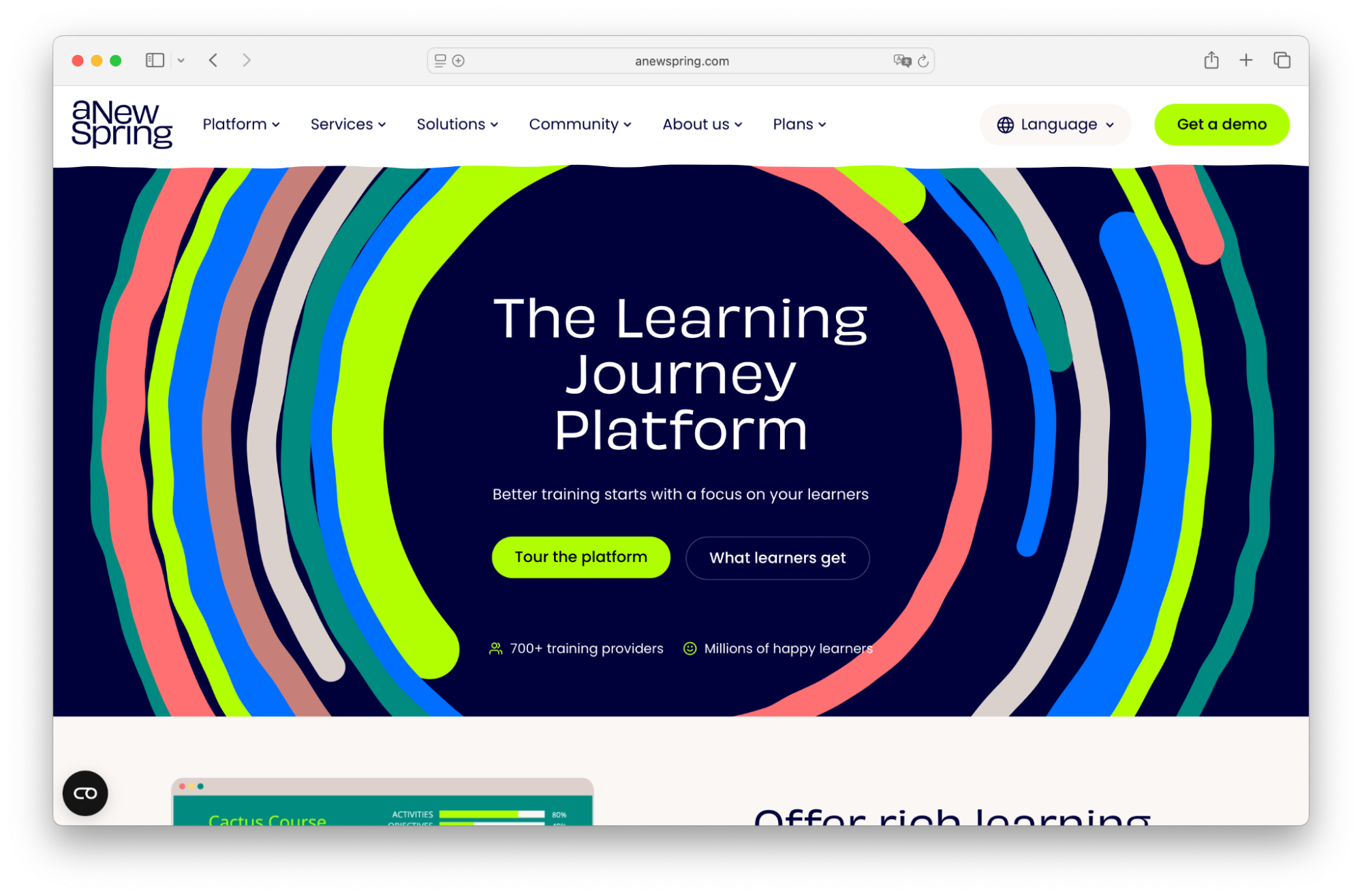
aNewSpring – that’s us – is a rich learning journey platform built specifically for training providers. We believe personalised learning isn’t just a feature; it’s the foundation of meaningful, effective training. That’s why we’ve built in the tools to help you create tailored learning experiences at scale, without necessarily needing a team of learning scientists or a custom tech stack.
With aNewSpring, you can design and deliver personalised learning journeys that adjust to each learner’s needs, progress and goals. Whether you’re building adaptive pathways, offering blended formats or using data to shape learning experiences over time, we’ve got you covered.
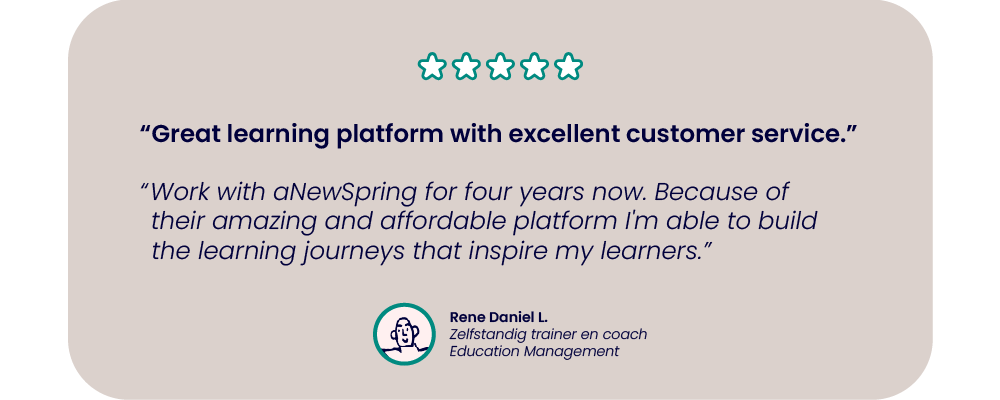
Key features
Personalised learning paths
Adaptive learning support
MemoTrainer™ for spaced repetition
Integrated authoring tool
Training catalogues and e-commerce tools
Advanced reporting and insights
Dedicated Customer Success Manager (with aNewSpring for Organisations)
API and SSO integrations
Blended and self-paced learning options
Access to an active learning design community
Website:
Pricing:
Free trial for individual trainers available and then pricing starts at €18 per learner per year (no annual fee). Custom plans available for training organisations on request.
LearnWorlds: Best for solo course creators
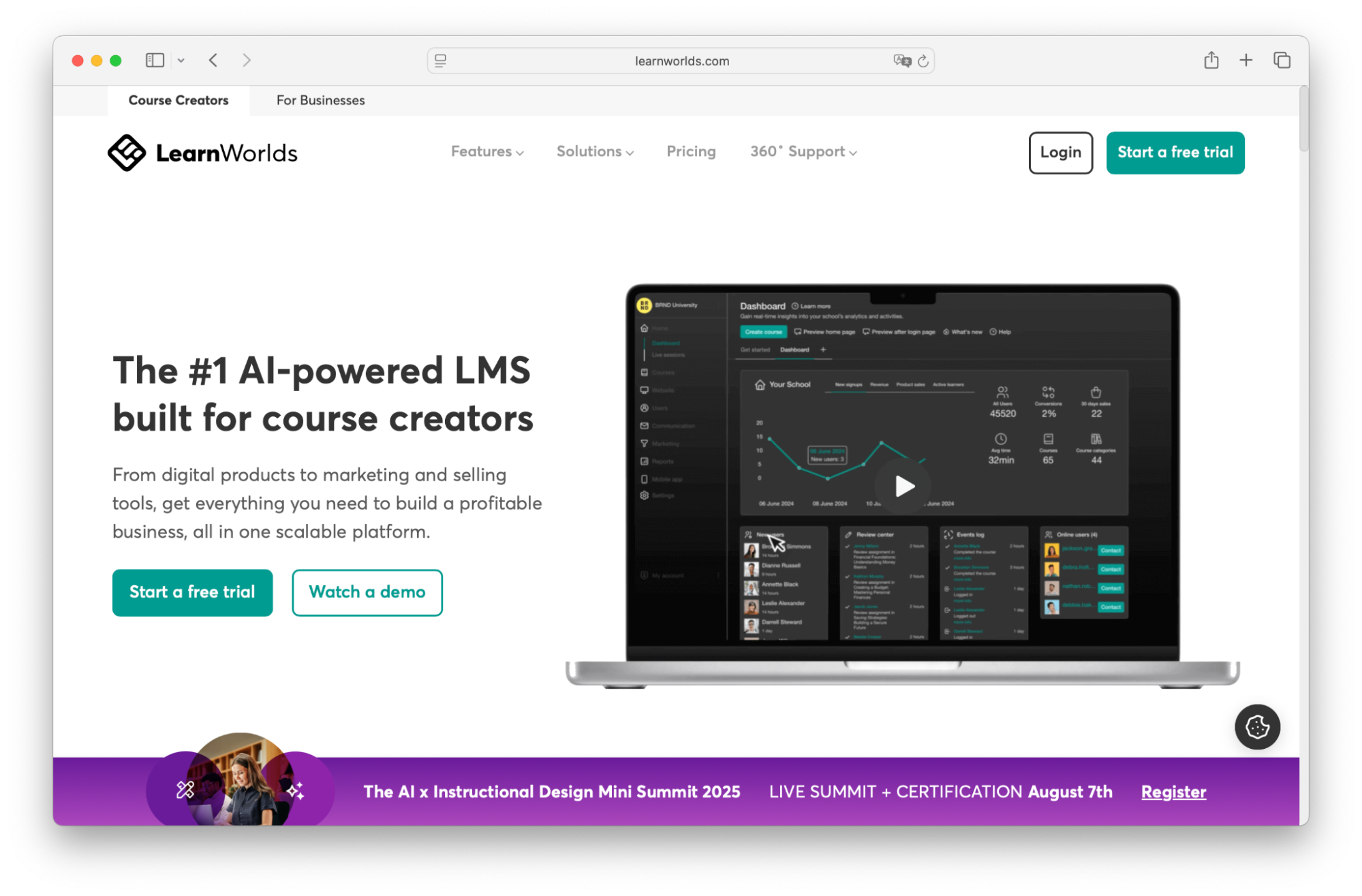
LearnWorlds is a flexible, all-in-one course platform that’s ideal for solo trainers or small teams who want to build personalised learning journeys without coding. It offers learner segmentation, interactive content and mobile access, giving you plenty of ways to tailor the experience, even if it’s not fully adaptive.
Pros
Customisable learning paths via segmentation
Interactive video learning with quizzes and transcripts
Built-in assessments, surveys and progress tracking
White-labelling and mobile app support
Strong brand control and site design tools
AI assistant to support course creation
Great for creators who want full ownership of their learner experience
Cons
No true adaptive learning (e.g. AI-driven personalisation based on learner behaviour)
Backend navigation can feel clunky
Design UI has limitations
Some features require higher-tier plans
Can’t fully disable sales functionality for internal-only training use
Website
Pricing
Paid plans start at €24 per month (billed annually). More advanced features available in higher-tier plans.
Moodle: Best for academic institutions with dev support
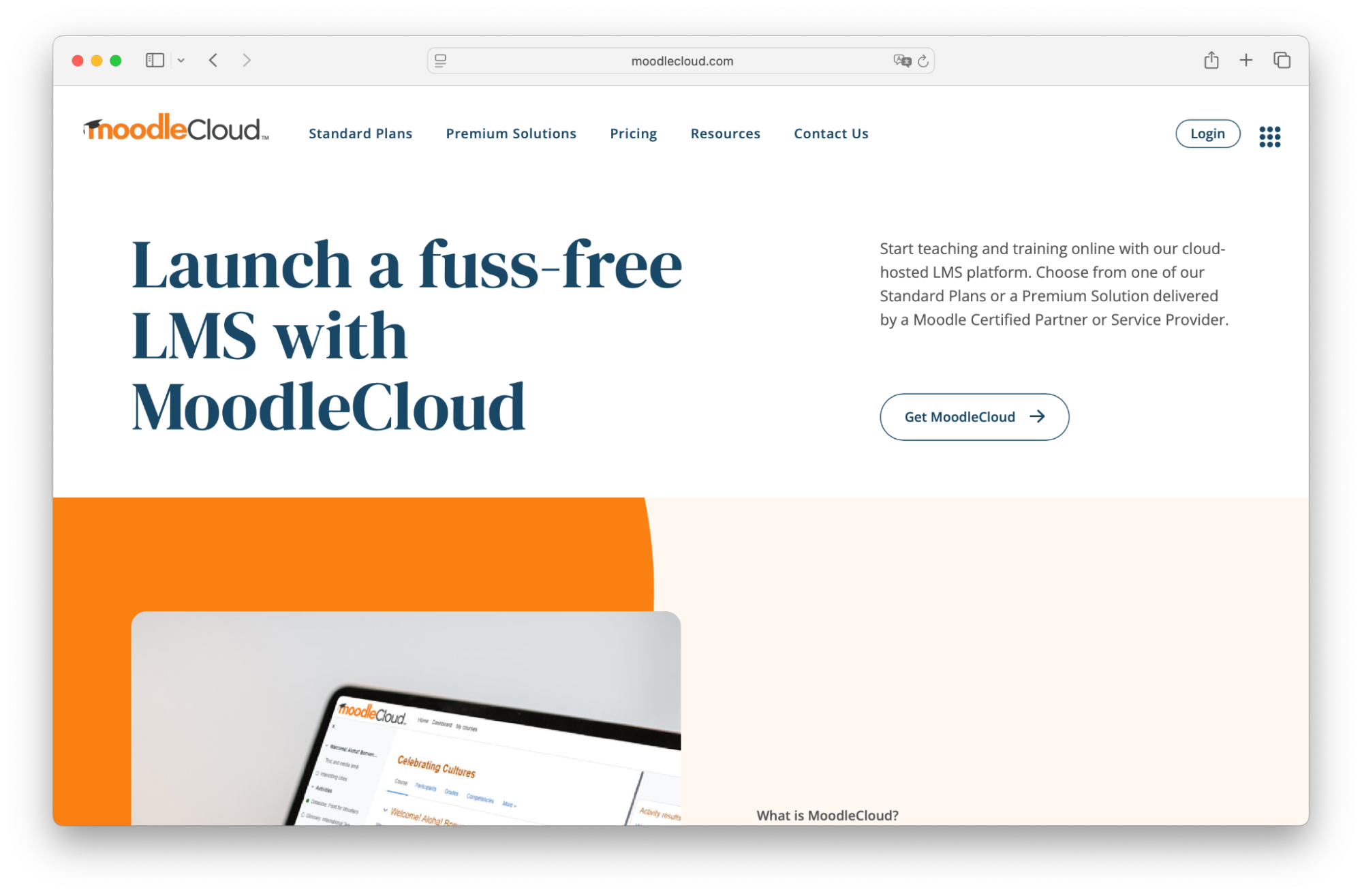
Moodle is a flexible, open-source platform that works best for academic organisations or training teams with in-house development support. It allows for personalised learning through group access settings, conditional activities, and custom plugins, but the learning curve and maintenance can be high if you’re on your own.
Pros
Fully customisable through plugins and code
Personalised paths using conditions, groups and enrolment settings
Free to use (self-hosted)
Active global community and support resources
Rich assessment and collaboration features
Cons
Requires technical knowledge to set up and manage
Interface can feel outdated
Many personalisation features depend on plugins
More effort needed for updates and maintenance
Website
Pricing
As an open source platform, Moodle is free for self-hosted use. MoodleCloud plans start at €120 per year, for up to 50 users. Enterprise options available via a Moodle Certified Partner or Service Provider.
Docebo: Best for large L&D departments
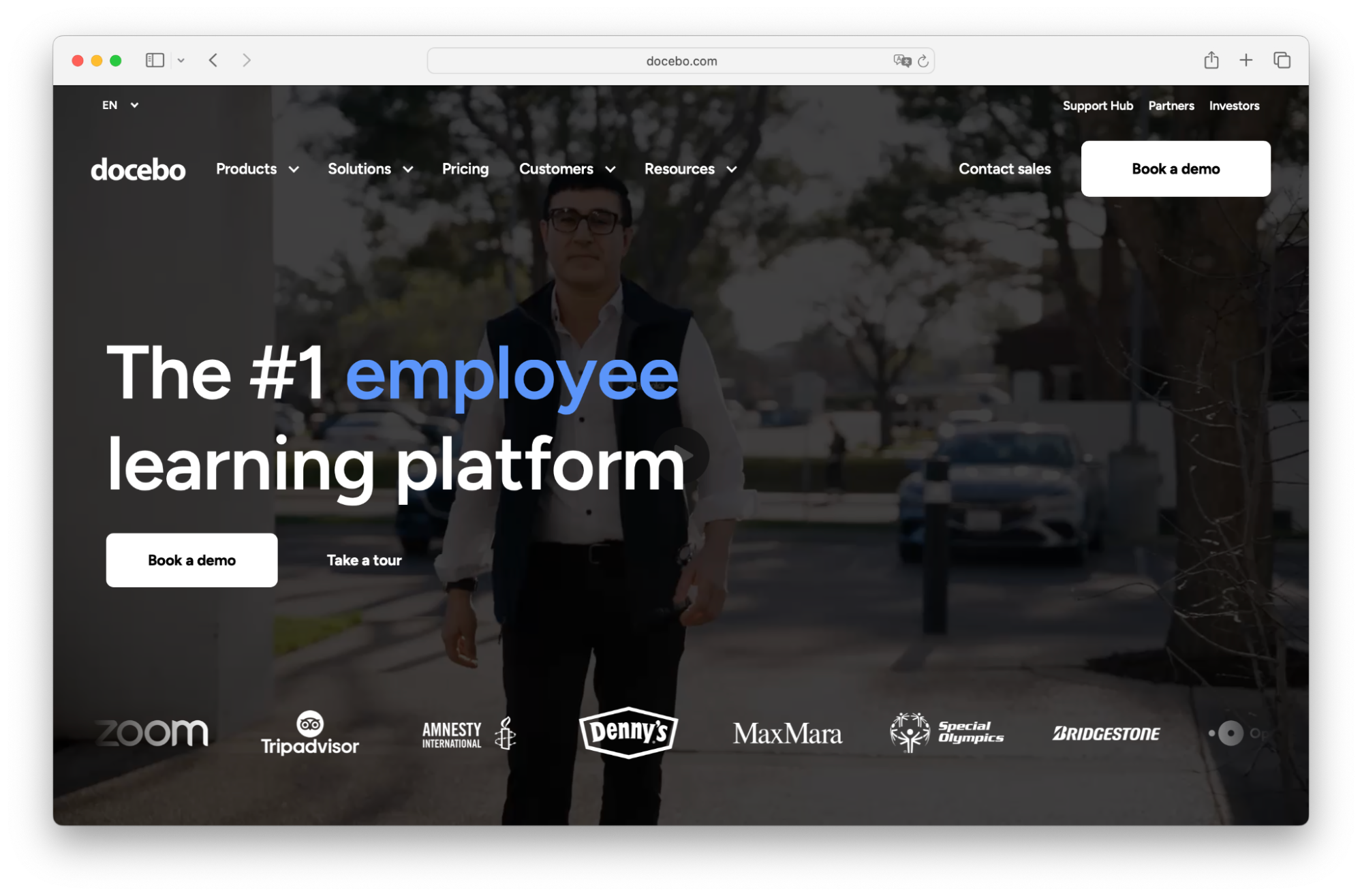
Docebo is a robust, enterprise-grade platform that’s built for scale. If you’re running learning across multiple teams, departments or external audiences, Docebo gives you the infrastructure to personalise at scale powered by AI and customisation features.
Its AI curates content, automates learning paths and helps surface relevant resources to different learners. You can manage multiple audiences from a single platform while tailoring the experience per group. Plus, its Coach & Share module encourages learner-generated content to support peer learning. It’s a good fit for L&D teams with dedicated admin or dev support but it can be overwhelming if you’re after something lighter or more out-of-the-box.
Pros
Personalised experiences using AI-powered content curation
Centralised platform for multiple audiences (employees, partners, customers)
Support for formal, social, and external learning formats
Multi-language support
Gamification features to drive engagement
Cons
Admin dashboard has a steep learning curve
Advanced customisation may require technical knowledge
Mobile app experience isn’t as strong as desktop
Native content creation tools are fairly basic
Website
Pricing
Pricing is available on request. Some features (like advanced analytics) are only available on higher-tier plans or as add-ons.
TalentLMS: Best for small businesses
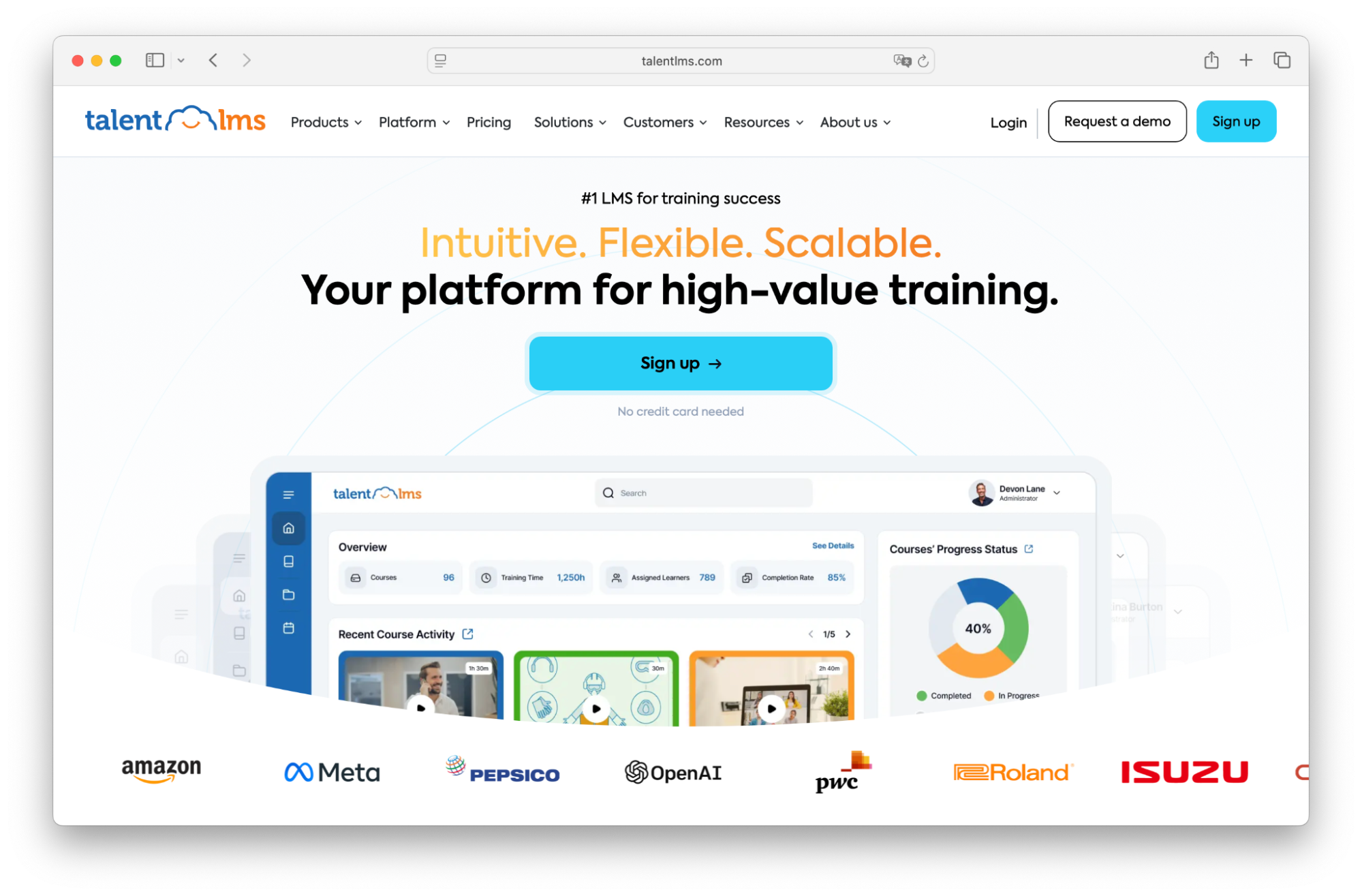
TalentLMS is a lightweight, flexible LMS that works well for small to mid-sized teams looking to personalise learning without the technical overhead. It’s easy to use, offers audience segmentation through “branches” and supports a wide range of content formats (including AI-generated courses), making it a good entry point for personalised learning journeys.
It doesn’t have the depth of customisation or adaptive learning you’d get from more enterprise-focused platforms, but it gives you plenty of tools to build tailored learner experiences quickly and affordably. Just note that some advanced features, like detailed reporting or SSO, are locked behind higher-tier plans.
Pros
Easy to use for both admins and learners
Personalised experiences via branches and branding
AI-powered course creation (TalentCraft)
Mobile app access and multi-language support
Affordable pricing and free plan available
Cons
Reporting can be basic unless upgraded
Some advanced customisation requires technical skills
Native content tools are quite basic
AI-generated content may need manual fine-tuning
Certain key features (e.g. API, SSO) are paid add-ons
Website
Pricing
Free plan available. Paid plans start at $109 per month (up to 40 users). Advanced features and integrations require higher-tier plans.
What makes a great personalised learning platform?
Not every platform that says it supports personalisation actually makes it easy to do. Here are a few things to look out for if you want to build personalised learning journeys that truly adapt to your learners’ needs:
Adaptive learning capabilities
Can the platform adjust the learning experience based on learner progress, preferences or performance? This could mean dynamic content recommendations, branching paths or automated triggers to guide next steps.
For instance, with aNewSpring, you can create personalised paths through different learning objectives: what has your learner mastered already and what needs work still? Create separate folders in the content libraries, content, questions and assessments for each of these objectives and make sure your learners only spend time on ones that are relevant for them. You can also use various conditions, such as time and date or specific rules. Think of minimum scores on assessments and denying access when the percentage is lower than that.
Data-driven personalisation
Look for platforms that give you actionable data, not just basic reports. The best tools help you identify learner trends, knowledge gaps and content performance so you can tweak journeys accordingly.
Blended learning support
A personalised journey isn’t always 100% digital. Platforms that support both online and offline learning (like ILT sessions, workshops or coaching) give you more options to tailor the experience.
An example that works for many customers of aNewSpring is using the platform for pre-work before classroom training. Your learners might start your training with different knowledge levels, but this can be balanced out by providing theory online, before meeting up offline for the practical aspects of the training. The pre-work can adapt to your learners by letting them skip what they already know.
Content modularity
Personalisation works best when you can mix and match content. Platforms that let you build modular courses and assign different modules to different learner groups make it easier to customise at scale.
Progress tracking and feedback
Learners need visibility into how they’re doing and so do you. Platforms should offer flexible tracking, feedback options and completion rules to help guide and motivate learners through their journeys.
Something that you can find in the aNewSpring platform is profiles and competences, a feature that helps learners (and you) see their progress and what competences they still need to complete. Additionally, it shows which learning journeys can contribute to it. Another way for learners to keep track of their certificates, diplomas and recognitions is through their personal portfolio. This provides them insight into what they have achieved already and gives them the opportunity to share it externally.
Create personalised learning journeys at scale with aNewSpring
If you’re looking for a platform built specifically for training providers and that helps you design, deliver, and improve personalised learning journeys without the complexity, aNewSpring is worth a closer look.
From adaptive pathways and blended learning formats to data-driven insights and learner engagement tools, everything’s designed to help you offer relevant, impactful learning at scale. And with support from a dedicated Customer Success Manager, you won’t be doing it alone.
Curious how it could work for your organisation? Book a free demo and we’ll show you what’s possible.
FAQs about personalised learning journeys
What is a personalised learning journey?
A personalised learning journey is a training path that’s tailored to an individual learner’s needs, goals and progress. It often includes custom content, flexible pacing and feedback that adjusts as the learner moves through the material.
Is adaptive learning the same as personalised learning?
Not quite. Adaptive learning is one way to personalise learning by using data and algorithms to adjust the content in real-time. But personalisation can also include manual segmentation, custom learning paths or simple content branching without full adaptivity.
What’s the difference between LMS and personalised learning platforms?
An LMS manages and delivers learning content, but not all LMSs are built to personalise that content. A personalised learning platform includes features to adapt or customise learning experiences to each individual or group of learners.
Can I personalise learning without using AI?
Yes. AI helps automate and scale personalisation, but you can also personalise learning manually by grouping learners, assigning different content based on roles or goals or using branching logic in course design.
Do I need a learning designer to build personalised learning?
Not necessarily. Many platforms (like aNewSpring) make it easy to set up personalised paths with built-in tools and templates. But if you're working on complex learning journeys or want to use adaptive techniques, a learning designer can definitely help.
Can personalised learning work in blended formats?
Absolutely. In fact, blended learning often benefits from personalisation, like offering extra practice to learners who need it or giving advanced learners the chance to skip ahead. The key is having a platform that supports both formats.